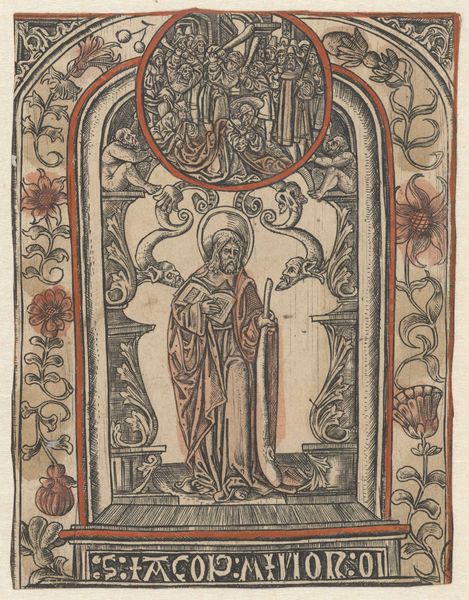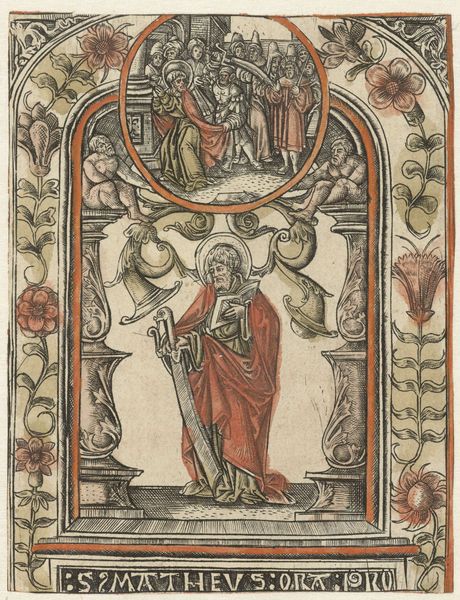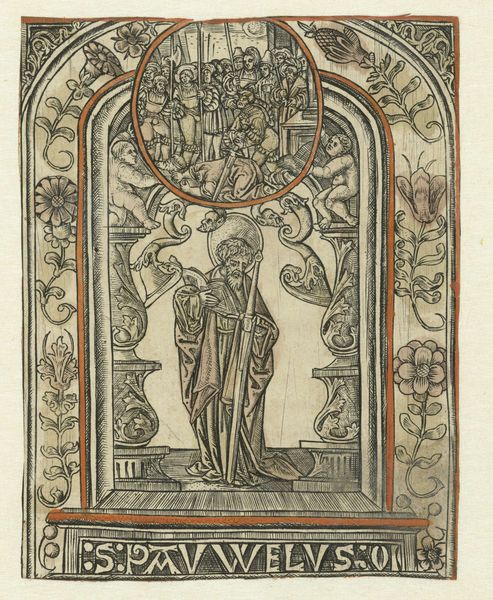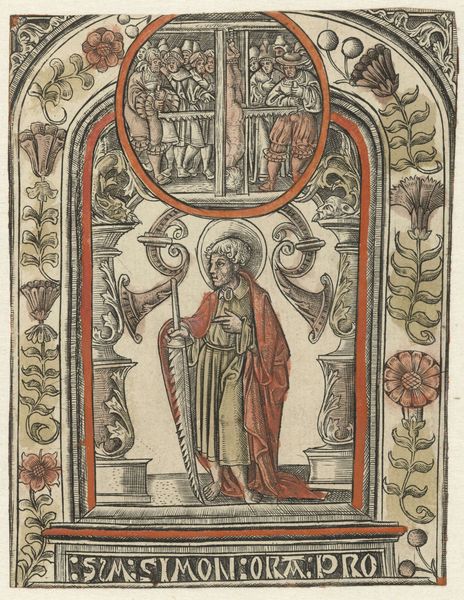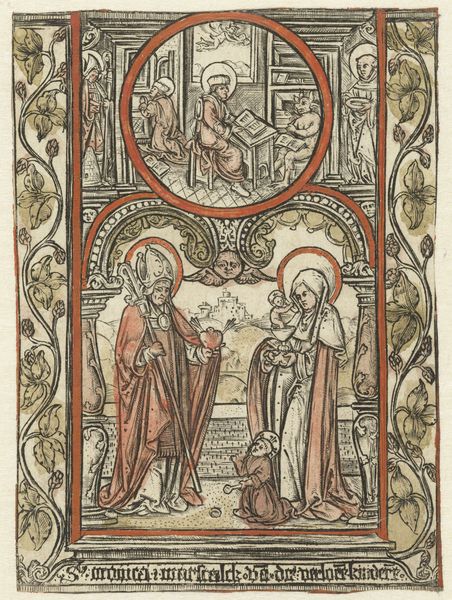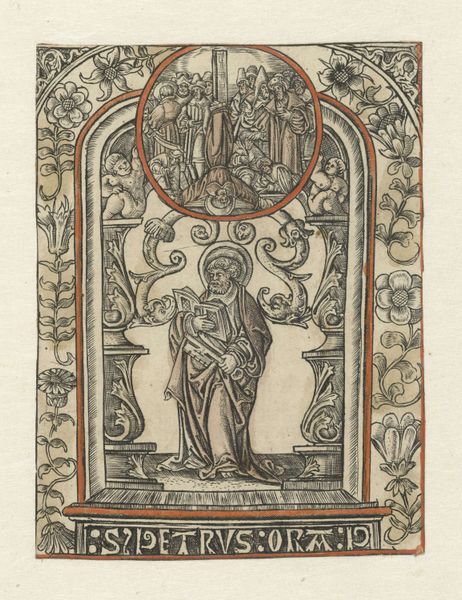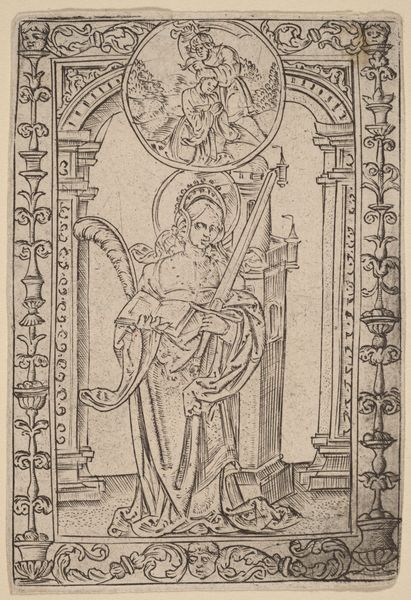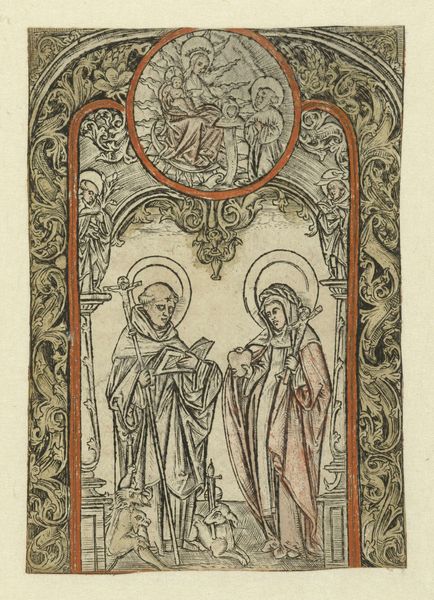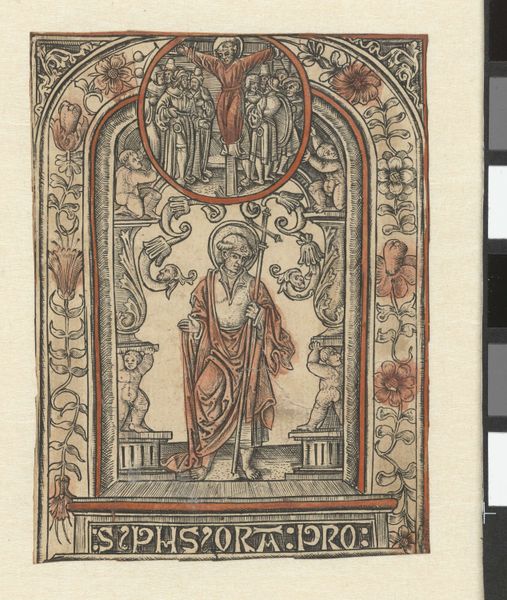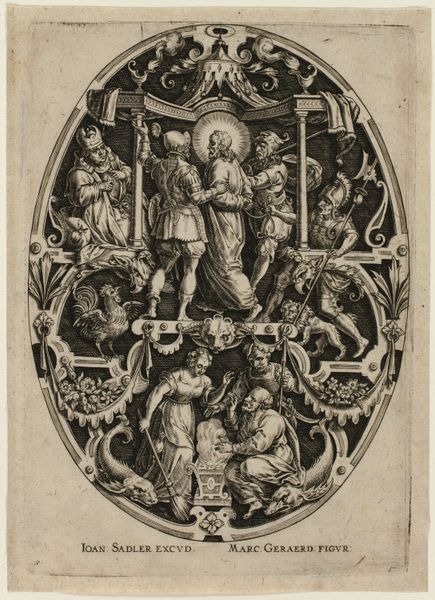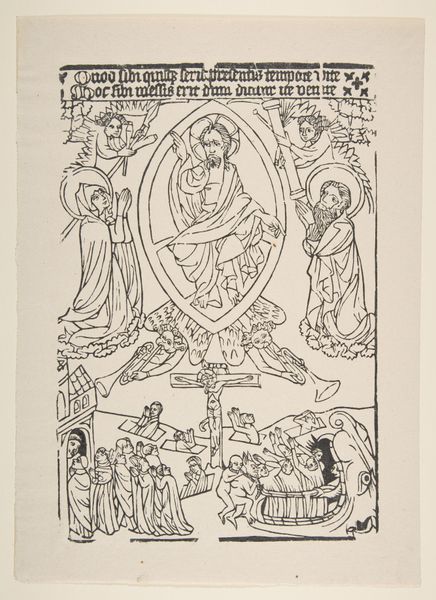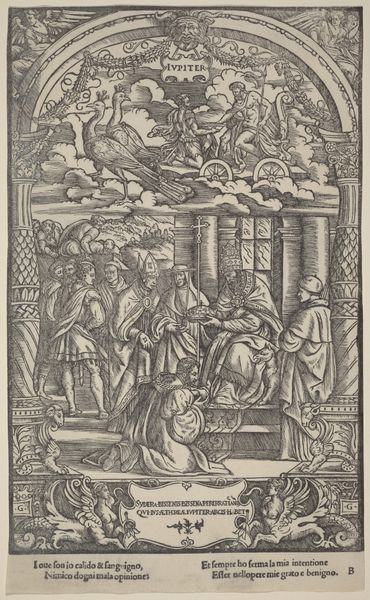
print, woodcut, engraving
#
portrait
#
toned paper
#
pen drawing
# print
#
pen sketch
#
sketch book
#
figuration
#
personal sketchbook
#
pen-ink sketch
#
woodcut
#
line
#
pen work
#
sketchbook drawing
#
history-painting
#
northern-renaissance
#
sketchbook art
#
engraving
#
doodle art
Dimensions: height 90 mm, width 80 mm, height 90 mm, width 80 mm
Copyright: Rijks Museum: Open Domain
Curator: Let's discuss this print titled "The Apostle James Major and his Martyrdom," attributed to Allaert Claesz., created sometime between 1510 and 1530. It’s a woodcut on toned paper, a fairly common medium for disseminating images at the time. Editor: There’s something deeply unsettling and, at the same time, serenely beautiful about it. The saint appears quite stoic amidst such ornamental flourishes. Almost too many of them if you ask me, what’s with all the chubby cherubs in such a morbid context? Curator: Right, I'd argue that the artist's choice of the woodcut technique is crucial. The medium lent itself well to mass production and also imposed certain constraints. Look at the bold lines—they allow for clarity and detail but require a precise engagement with the physical material itself. Allaert Claesz. had to carve the image in reverse onto a woodblock. The production of prints like this speaks volumes about the increasing market for religious imagery in Northern Europe, and in turn provided Allaert with a livelyhood. Editor: It makes you wonder who would commission an image like that in the first place! Did people really need the constant reminder that you are more likely to get brutally murdered for your faith? Personally, the composition of that miniature drama going on in the top, featuring what seems to be the very execution is what really holds my gaze. Curator: Yes! That little narrative is cleverly positioned, drawing your eye upwards and anchoring the whole piece. Notice the tonal range achieved, giving an atmospheric and dynamic effect that contrasts with the crispness of the line work, probably enhanced using light and shade effects to draw out forms and details. It almost suggests that martyrdom would elevate you to new heights. It makes me think that what we are really talking about here is how the artist navigates that tension between individual craft and mechanical production and how religious images functioned in the lives of ordinary people. Editor: I appreciate that perspective. For me, beyond its function, what stays with me is how the stoic central figure, so calm, is eternally paired with this little, bloody, snapshot—life with death or death with life I guess! Curator: I find myself appreciating Allaert Claesz.'s commitment to a wider audience, how it all trickled down, so to speak. Editor: Agreed, and what a testament to a skilled and perhaps, cheeky woodworker. I might as well go check it out from close now, see you there.
Comments
No comments
Be the first to comment and join the conversation on the ultimate creative platform.
